San Martino
We’ve visited San Martino several times, but each time Gary and I notice more and more. Isn’t that the way it usually happens? The first time you go into a museum or church, you usually pick up the brochure, and flip through it quickly – hoping to catch just the main sights. It happens all the time to me. Then I need to return.
This post contains affiliate links that help keep this website running. By purchasing through our links, we make a small commission at no extra charge to you. Thank you for your support!
San Martino Cathedral
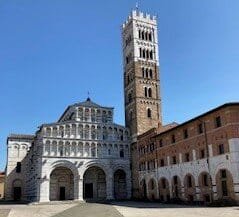
According to tradition, the original building was founded by Bishop Frediano in the 6th century and was later rebuilt in the 8th century under Bishop John I. It was during this period it became the Cathedral of Lucca and was officially consecrated in 1070. It was dedicated to St. Martin, the patron saint of both the Cathedral and the town. The Cathedral follows the Latin cross plan with three naves and a transept and is 84m long, 27m wide, and 27,50m high.

San Martino’s Interior
The small octagonal temple is located halfway down the left nave by Matteo Civitali dated 1484. It contains the Volto Santo of Lucca, a venerated wooden crucifix, with a robed Christ. The altar is by Juvarra (1725).
The Volto Santo is in Romanesque style and on September 14th is the center of the festivity of Santa Croce. On this day, the Volto Santo is dressed up with very precious religious garments.
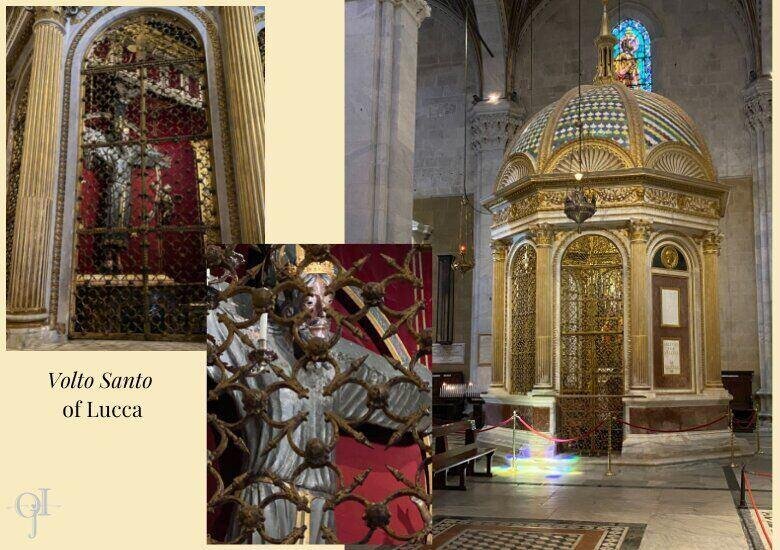
On the evening of September 13th, luminarias fill the streets in celebration. It’s an amazing and enchanting occasion for taking a walk through the tiny streets of Lucca’s center, completely lit up with candles and lamps. It must be an amazing event and one we will participate in this year.
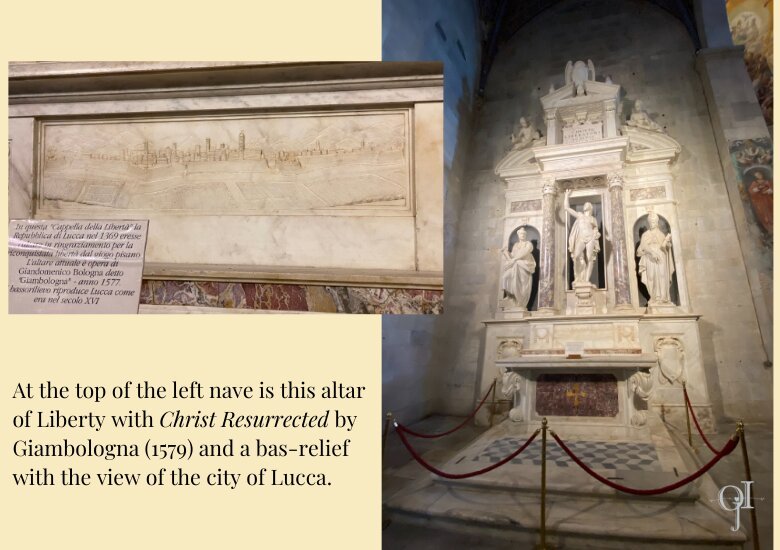
The Façade of the Cathedral
The Cathedral is in both a Gothic and Romanesque style with a bell tower that is about 60m high (197 feet). In fact, the tower was in existence before the church. When the church was being built next to this existing tower, they ran out of room which affected the size of the third arch! If you take a close look, it is slightly smaller than all the others. They actually had to squeeze it in!
The sculptural decoration inside the portico (just before you enter the doors) uses pink, green, and white marble to magnificent effect. There are scenes for each month of the year – notice the intricate detail.
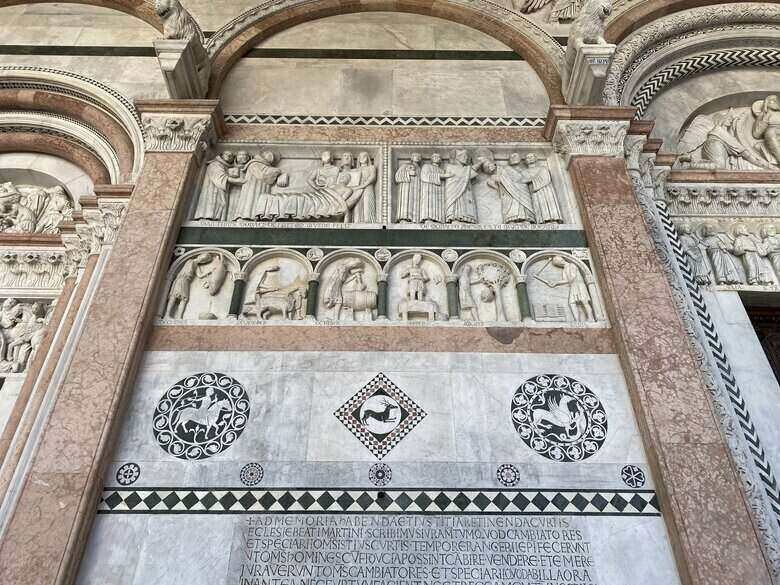
Ilaria del Carretto or… Mrs Guinigi
There are many beautiful works of art inside this cathedral. Ilaria del Carretto’s tomb is one of the great masterpieces found in the Cathedral. No doubt if you’ve been to Lucca or have viewed photographs, you’ve seen the famous Torre Guinigi. This is the tower with the trees on top. This tomb is a commemoration created by Jacopo della Quercia, for Ilaria as she died very young as a consequence of childbirth. The dog at her feet is a symbol of material fidelity.

A Bit Unusual Find…
Outside the Cathedral towards the end with the bell tower, is this odd-looking circle, a labyrinth of sorts that is embedded into the stone. I have yet to find out the significance of this maze but a friend told me to put my index finger in one of the caverns and follow the pattern, clearing my mind. It was peaceful. the canyon made it easy for my finger to just follow the path. What is the significance of this as part of the Cathedral and I wonder what the official name of it truly is?
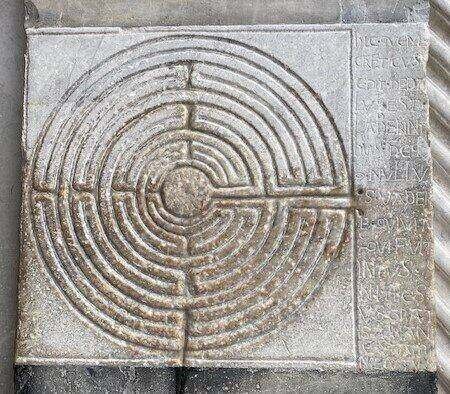
Conclusion
My photos don’t really do the Cathedral of San Martino justice. If you come to Lucca, spend some time here and enjoy its beauty. Of course, if you are in Lucca – send us an email and we’d love to meet you for coffee or vino.


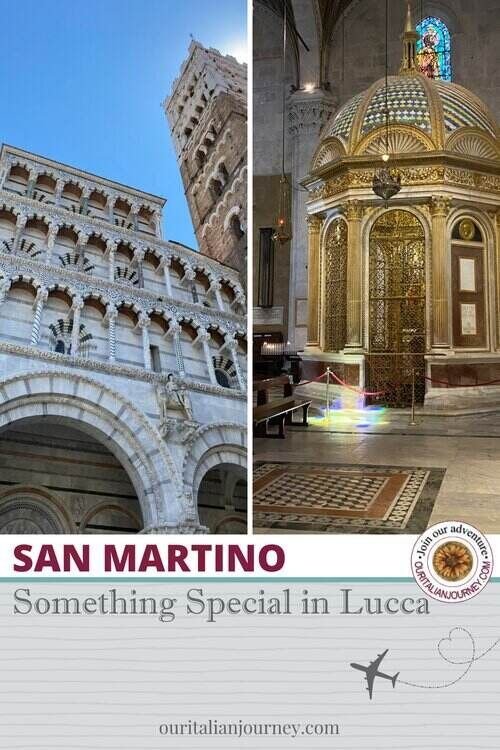





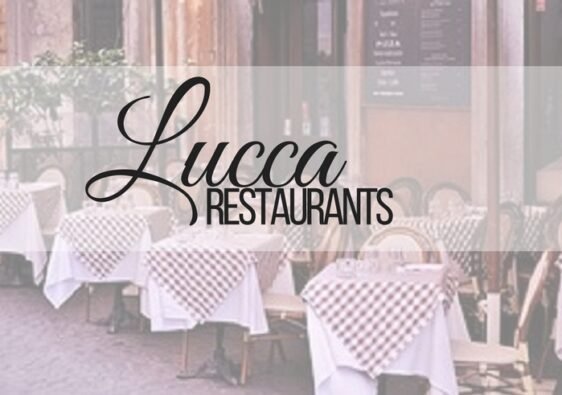


I am new to following your blog and enjoyed your book very much. I adore the Cathedral of San Martino and Lucca.
Years ago on a tour of the cathedral we learned a theory behind the labyrinth relief. It is based on a pagan myth (Theseus- I had to look it up again, I cannot lie! ) It’s about getting out of the labyrinth not getting into the center and parallels the Christian belief that faith in God will lead them out of mortal life and into heaven. Looking forward to more of your posts!
Ciao,
Cindy
First- welcome Cindy to the blog! Thank you so much for the labyrinth information. I had remembered after the video and post, of course, I knew there was more to the relief and so appreciate you reminding me and commenting so others can know too!
Ciao! I’m enjoying your posts. I’ll be in Lucca again in October. From my last visit, I’ve got this:
https://www.luc.edu/medieval/labyrinths/lucca.shtml
Two years ago we used the symbolism of the labyrinth as a kind of guidepost, a theme, and built an itinerary around it. Have you heard of Matilda of Canossa? Also important in Lucca’s medieval history.
A presto, Lynn
Thank you Lynn for your comment! GREAT information and we appreciate the information. I have to look into Matilda of Canossa. Please stay in touch!!